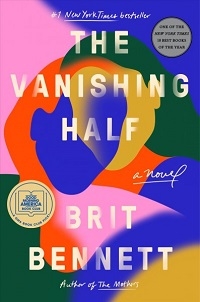
Brit Bennett‘s debut novel, The Mothers, earned well-deserved attention in 2016. The Vanishing Half, a compassionate and illuminating multi-generational saga published in 2020, has been received with even more enthusiasm by critics and readers alike, who have compared Bennett’s writing to the likes of James Baldwin and Toni Morrison.
The Vanishing Half tells the story of identical twin sisters, Desiree and Stella Vignes, raised in a black community in the South. This small community was founded on, and maintains, the tenants of colorism, which proposes that the color of a person’s skin is as important as the content of a person’s character, if not more so. For different reasons, the twins choose to run away together; soon after, their lives diverge to the point that their families, homes, and racial identities share nothing in common, at least on the surface. One chooses to secretly pass for white. The other returns with her daughter to the community where she was raised. Both suffer from their division, unaware their fates continue to mingle in the lives of the next generation.
The Vanishing Half had me in its grip from the first page. Tender and propulsive—to the point where I found myself thinking about the book when it lay far out of my reach—this novel offers a unique and stirring perspective on racism in the United States, while at the same time exploring questions of identity. Who are we, and what determines us? How do we cast off the past, and do we ever really? The Vanishing Half left me thinking about these questions and so much more, from its first sentence to its satisfying and moving conclusion.